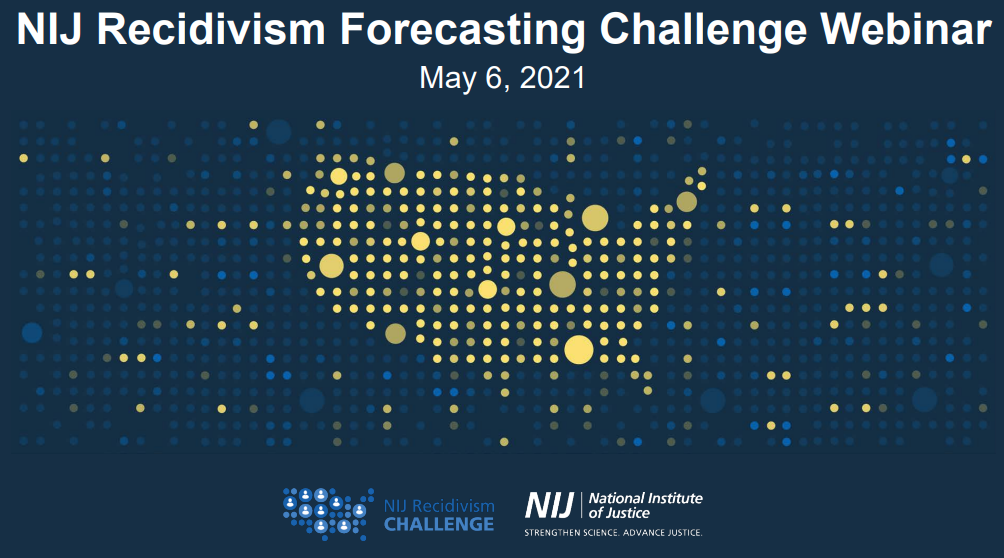U.S. Territories
Report From the States on What Works at the State and Local Levels: A Compendium of Assessment and Evaluation Results
Developing a Model for Providing Feedback to Reporters of Elder Abuse
Corrigendum to "Investigation into the Performance of Different Models for Predicting Stutter" [Forensic Science International Genetics (2013) Volume 7, Pages 422–427]
Understanding the Impact of COVID-19 on Victim Services
The COVID-19 pandemic had a detrimental impact on communities across the nation and significantly affected various aspects of individuals’ lives. One of the negative impacts was an increase in gender-based violence accompanied by shifting barriers to accessing services and support. Victims and victim service providers faced various challenges dealing with the increase in need for services, navigating barriers to help-seeking, and addressing logistical issues.
See the YouTube Terms of Service and Google Privacy Policy
Webinar Transcript: FY 2024 NIJ Graduate Research Fellowship Program
Deadline notice
The deadline to submit an application under the solicitation discussed below has passed.
NIJ held a webinar on February 14, 2024, gave an overview of NIJ’s Graduate Research Fellowship opportunity, which invites applications for doctoral dissertation research that is relevant to preventing and controlling crime, advancing knowledge of victimization and effective victim services, or ensuring the fair and impartial administration...
Corrigendum to “Relatedness calculations for linked loci incorporating subpopulation effects”
Economic Justice for Survivors of Intimate Partner Violence
See the YouTube Terms of Service and Google Privacy Policy
The Hidden Costs of Reentry: Understanding the Barriers to Removing a Criminal Record
NIJ hosted a webinar to discuss under-researched aspects of reentry: expungement of criminal records and the impact of those records. This webinar includes a presentation of ongoing research projects examining the impact of legal aid for expungement and past research projects studying the accuracy and permanency of criminal records and the prevalence of collateral consequences of conviction. A Q&A session will conclude this webinar.
See the YouTube Terms of Service and Google Privacy Policy
Multilevel Evaluation of Project Safe Neighborhoods
Project Safe Neighborhoods (PSN) is a DOJ-sponsored initiative to reduce violent crime, particularly gun crime, by fostering cooperation by criminal justice agencies and local partners to develop and implement strategic approaches.
See the YouTube Terms of Service and Google Privacy Policy
Assessing the gang level and community level effects of the Philadelphia Focused Deterrence strategy
Examining Equity in State Victim Compensation Programs: A Multilevel Analysis
Multilevel Evaluation of Project Safe Neighborhoods
Stalking: What Does it Take for Prosecutors to Hold Stalking Offenders Accountable?
NIJ Recidivism Forecasting Challenge Webinar Transcript
Challenge has closed
Thank you to everyone who submitted an entry. Winners will be notified by August 16, 2021, and posted online.
Winners are to submit paper outlining the variables that were tested, indicating which were of statistical significance and which were not, by September 17, 2021.
DARYL FOX: Good afternoon, everyone. Welcome to today's webinar. NIJ's Recidivism Forecasting Challenge, hosted...
School Transitions and Student Responses to Victimization - Breakout Session, NIJ Virtual Conference on School Safety
On February 16-18, 2021, the National Institute of Justice hosted the Virtual Conference on School Safety: Bridging Research to Practice to Safeguard Our Schools. This video includes the following presentations:
See the YouTube Terms of Service and Google Privacy Policy
Terrorism Research Before and After 9/11
The tragedy of 9/11 posed unprecedented challenges to forensic science, social science, and physical science and technology — the three bedrock sciences at NIJ. Recovering from the attack and preventing another one have became topmost priorities in the 10 years since the attack. As we approach the 10th anniversary, Gary LaFree discusses how that fateful day impacted social scientific priorities and the outcomes from those changes.
See the YouTube Terms of Service and Google Privacy Policy
Advancing Understanding, and Informing Prevention of Public Mass Shootings: Findings from NIJ Funded Studies, Part 2
In recent years, NIJ invested in several research projects to advance understanding and inform prevention of public mass shootings.
See the YouTube Terms of Service and Google Privacy Policy
Juvenile Gun Violence and Gun Markets in Boston
Development of a Baseline Survey of Random Presence of Glass and Paint for the Interpretation of Evidence in the U.S. Courts
Real-Time Crime Forecasting Challenge Webinar
This webinar will offer a brief overview of the National Institute of Justice and the data science needs of the criminal justice field. In addition, it will provide details about the Crime Forecasting Challenge, including who can submit, how to retrieve datasets, and the submission categories. The overall goal of the Crime Forecasting Challenge is to harness recent advances in data science to drive innovation in algorithms that advance place-based crime forecasting.
See the YouTube Terms of Service and Google Privacy Policy
How Collaboration Between Researchers and Police Chiefs Can Improve the Quality of Sexual Assault Investigations: A Look at Los Angeles
Panelists discuss the application of research findings from an NIJ-sponsored study of sexual assault attrition to police practice in Los Angeles. There are three main focal points: (1) the mutual benefits of researcher/practitioner partnerships, (2) the implications of variation in police interpretation of UCR guidelines specific to clearing sexual assault (with an emphasis on cases involving nonstrangers), and (3) the content of specialized training that must be required for patrol officers and detectives who respond to and investigate sex crimes.
See the YouTube Terms of Service and Google Privacy Policy
Economical Crime Control: Perspectives from Both Sides of the Ledger
The surge in incarceration since 1980 has been fueled in part by the mistaken belief that the population can be divided neatly into "good guys" and "bad guys." In fact, crime rates are not determined by the number of at-large criminals, any more than farm production is determined by the number of farmers. Crime is a choice, a choice that is influenced by available opportunities as much as by character. This perspective, drawn from economic theory, supports a multi-faceted approach to crime control. Dr.
See the YouTube Terms of Service and Google Privacy Policy
Benefit-Cost Analysis for Crime Policy
How do we decide how to allocate criminal justice resources in a way that minimizes the social harms from both crime and policy efforts to control crime? How, for that matter, do we decide how much to spend on the criminal justice system and crime control generally, versus other pressing needs? These questions are at the heart of benefit-cost analysis.
See the YouTube Terms of Service and Google Privacy Policy
Homicide in the United States
The 2009 NIJ Conference kicked off with a blue-ribbon panel of leaders with expertise in urban issues as they relate to homicide. These experts will discuss promising approaches that have resulted in reduced violence and community empowerment.



